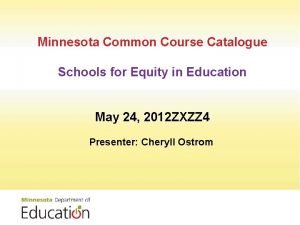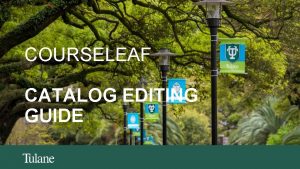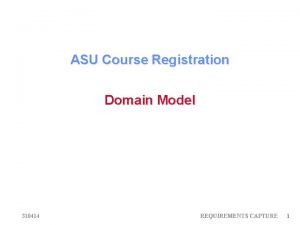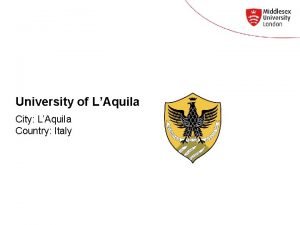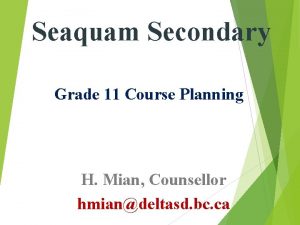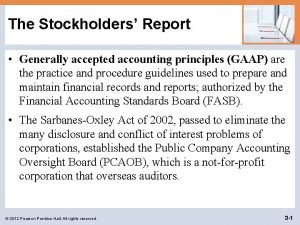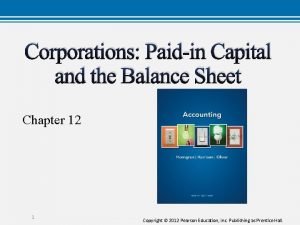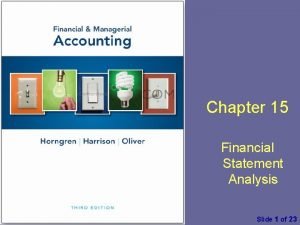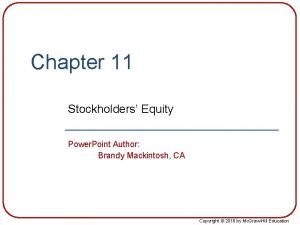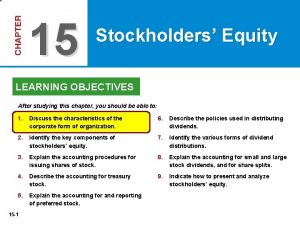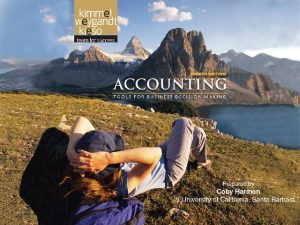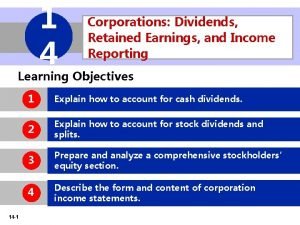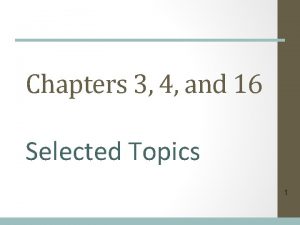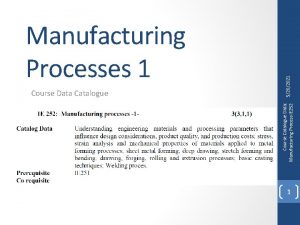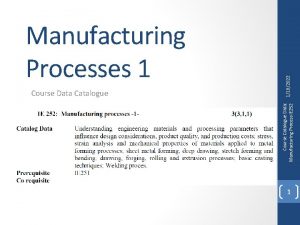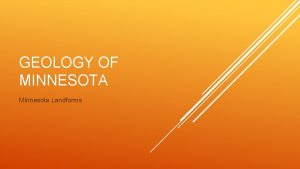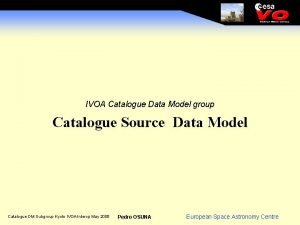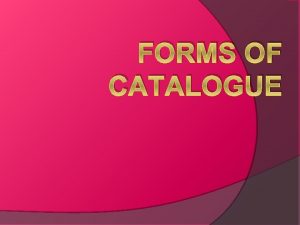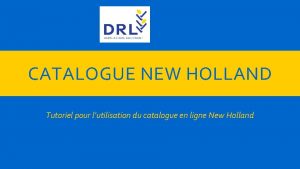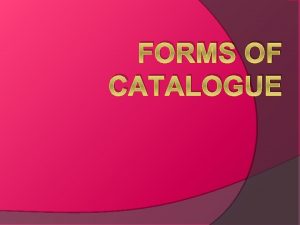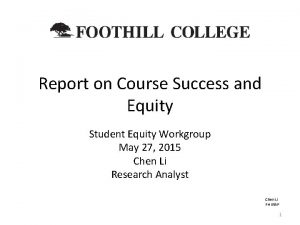Minnesota Common Course Catalogue Schools for Equity in



















- Slides: 19

Minnesota Common Course Catalogue Schools for Equity in Education May 24, 2012 ZXZZ 4 Presenter: Cheryll Ostrom

Goals for MCCC discussion: 1. Summarize the what and why of the MCCC project. 2. Introduce MCCC database information that may be pertinent for the Schools for Equity in Education. 3. Provide time for questions and discussion. education. state. mn. us 2

Summary MCCC project What? • Describes local courses offered, teachers who taught them and students who completed them, including students’ marks and credits at transcript level. Minnesota Department of Education is responsible for P-12 data collection. • Started with grades 9 -12 for 2010 -2011 school year; collecting course information in all subject areas. • Adding grades K-8 beginning with 2011 -2012 school year; collecting only language arts and math course information. • Completing implementation with Early Childhood course information. education. state. mn. us 3

How do we know what to collect? Federal Legislation: All fifty states are gathering information to meet the federal legislation. – HR 2272 America COMPETES Act of 2007 SEC. 6401. Required Elements of a Statewide P-16 Education Data System § i) PRESCHOOL THROUGH GRADE 12 EDUCATION AND POSTSECONDARY EDUCATION- With respect to preschool through grade 12 education and postsecondary education: – (I) a unique statewide student identifier that does not permit a student to be individually identified by users of the system; – (II) student-level enrollment, demographic, and program participation information; – (III) student-level information about the points at which students exit, transfer in, transfer out, drop out, or complete P-16 education programs; – (IV) the capacity to communicate with higher education data systems; and – (V) a State data audit system assessing data quality, validity, and reliability. education. state. mn. us 4

How do we know what to collect? (continued) – PRESCHOOL THROUGH GRADE 12 EDUCATION- With respect to preschool through grade 12 education-§ § § (I) yearly test records of individual students with respect to assessments under section 1111(b) of the Elementary and Secondary Education Act of 1965 (20 U. S. C. 6311(b)); (II) information on students not tested by grade and subject; (III) a teacher identifier system with the ability to match teachers to students; (IV) student-level transcript information, including information on courses completed and grades earned; and (V) student-level college readiness test scores. education. state. mn. us 5

Why are we collecting this data? – (E) FUNCTIONS OF THE STATEWIDE P-16 EDUCATION DATA SYSTEM- In implementing the statewide P-16 education data system, the State shall: § (i) identify factors that correlate to students' ability to successfully engage in and complete postsecondary-level general education coursework without the need for prior developmental coursework; § (ii) identify factors to increase the percentage of low-income and minority students who are academically prepared to enter and successfully complete postsecondary-level general education coursework; and § (iii) use the data in the system to otherwise inform education policy and practice in order to better align State academic content standards, and curricula, with the demands of postsecondary education, the 21 st century workforce, and the Armed Forces. education. state. mn. us 6

State legislation requirements 1. Minnesota Statute, Section 120 B. 35 - Student Academic Achievement and Growth – Beginning in July 2011, the commissioner must report two core measures indicating the extent to which current high school graduates are being prepared for post secondary and career opportunities. 1. A preparation measure indicating the number and percentage of high school graduates in the most recent school year who completed coursework important to preparing them for postsecondary academic and career opportunities consistent with the core academic subjects required for admission to Minnesota public colleges and universities. 2. A rigorous coursework measure indicating the number and percentage of high school graduates in the most recent school year who successfully complete one or more college-level AP, IB, PSEO or industry certification courses or programs. education. state. mn. us 7

State legislation requirements (continued) 2. Minnesota Session Laws 2009, Chapter 96, Article 2, Section 60 – Develop a model projecting anticipated performance of each high school on preparation and rigorous coursework measures to compare schools. – The model must use various background characteristics of students. education. state. mn. us 8

Data collection, display and dissemination responsibilites 1. MDE is responsible for P-12 data collection system (MCCC); some analytics and information will be available on MDE website. 2. Minnesota P- 20 Education Partnership is responsible for P-20 database, analytics and data display. Statewide workgroups include: a. b. c. d. College and Career Readiness Achievement Gap Rigorous Course Taking Postsecondary Completion education. state. mn. us 9

MCCC is based on latest national model 1. 1982: National Assessment of Educational Progress (NAEP) created the Classification of Secondary School Courses (CSSC) for a longitudinal study of student course-taking patterns. 2. 1995: National Center for Education Statistics (NCES) and Association of College Registrars and Admissions officers developed the Pilot Standard National Course Classification System for Secondary Education (SNCCS). 3. 2007: The Secondary School Course Classification System: School Codes for the Exchange of Data (SCED) developed by the National Center for Education Statistics (NCES). – Three years in development – Index of grades 9 -12 subject area classifications and documentation elements – Index of grades P- 8 subject area classifications and documentation elements added in 2011 education. state. mn. us 10

23 Subject Area classifications in Grades 9 -12 MCCC 01 02 03 04 05 06 07 08 09 10 11 12 13 14 15 16 17 18 19 20 21 22 23 English Language and Literature Mathematics Life and Physical Science Social Sciences and History Visual and Performing Arts World Language and Literature Religious Education and Theology Physical, Health, and Safety Education Military Science Computer and Information Sciences Communications and Audio/Visual Technology Key: Business and Marketing Blue: Traditional Manufacturing Academic Subject Health Care Sciences Areas 01 – 06 and 08 Public, Protective, and Government Services Hospitality and Tourism Purple: Career and Architecture and Construction Technical Education Agriculture, Food, and Natural Resources Subject Areas 10 – 22 Human Services Green: Other Subject Transportation, Distribution and Logistics Areas 07, 09 and 23 Engineering and Technology Family & Consumer Science Academic and Career Development (Special Education and English as a Second Language have their own categories within this Subject Area)

Each of the 23 Subject Areas are divided into categories Category of Course Classifications Classifications in the category 1. Each MCCC classification has a unique five digit number that identifies it specifically and locates it within a subject area and category. 2. Each district creates a Local Course Index by: Ø Classifying each course it offers by assigning it a five digit MCCC classification number Ø Providing additional, contextual information for each classified course.

Selected documentation elements that provide contextual information A. Course Level: Identifies the “academic” level of the course. • • Basic/remedial General/regular Enriched/honors Dual/Concurrent Enrollment (College-in-the Schools) Articulated curriculum agreement Industry/occupation certification No credit Not applicable B. Sequence: Identifies depth of course offerings in a series (1 of 3, 6 of 12). • • First number where course sits Second number range of courses C. Standards addressed: Identifies type of standards used to align course curriculum, instruction, assessment. • • • National State Local Combination None Addressed education. state. mn. us 13

The four data collections associated with the MCCC: 1. Local Course Index List of local courses indexed according to the MCCC 2. Calendar Data Collection Selected local scheduling information 3. Staff Course Record Which educators taught individual sections of local courses 4. Student Course Record Which students completed what sections of courses, including marks and credits Note: Local student transcripts will always be the official student transcripts, and local schools/districts will always determine if students have met requirements to graduate from the local school system. education. state. mn. us 14

Required data collections based on coursework types Data Collections Scheduled Courses Project-Based Learning Local Course Index Yes No Calendar Data Yes Staff Course Records Student Course Records Independent Study Direct Pay Off. Site PSEO Yes No No No Yes Yes Must be reported using MCCC seminar/project classifications. education. state. mn. us Must be indexed using MCCC independent study classifications. College information only is reported. 15

Rigorous coursework measures identified in the MCCC 1. Identified by course level documentation: – Dual/concurrent enrollment (College-in-the-School) courses – Articulated curriculum agreement courses 2. Identified by MCCC Classification: – International Baccalaureate courses (IB) – Advanced Placement courses (AP) 3. Identified on Student Course Record: – Off-site PSEO courses – Direct Pay Off-site PSEO courses education. state. mn. us 16

MCCC data, analytics and displays • Data that must be collected in the MCCC project is established in federal and state mandates. • Some uses for MCCC data are established in federal and state mandates. • Some “standard” analytics and data displays are currently being discussed and planned. • How more or other information, including analytics and data releases are at this point, to my knowledge, in the discussion phase. education. state. mn. us 17

Examples of data in the MCCC database 1. Number and type(s) of rigorous coursework completed by particular student group. Example: Percentage of African-American males completing off-site PSEO courses at University of Minnesota campuses across the state? 2. The number and subject area of articulated curriculum agreement courses offered in a designated geographical area of the state. Example: How many articulated curriculum agreement courses in agriculture are offered in the southwest quadrant of Minnesota? 3. The particular subject area of ITV courses completed by a particular student group. Example: How many ITV courses in medical technology are completed by female high school graduates? education. state. mn. us 18

Questions, concerns, issues about the MCCC project Ø How might the MCCC data collection be useful to the group? Ø What particular kind of information is the group looking for? Ø What kinds of information would this group like to get from the MCCC project? Ø Am I asking the right questions? Questions about the MCCC project: mde. mccc@state. mn. us. To get automatic statewide MCCC announcements, email and asked to be put on the MCCC list serve. education. state. mn. us 19
 Minnesota common course catalog
Minnesota common course catalog Tulane course catalogue
Tulane course catalogue Asu course catalogue
Asu course catalogue Course catalogue univaq
Course catalogue univaq Seaquam course catalogue
Seaquam course catalogue Power schools huntsville city schools
Power schools huntsville city schools Reach target safety
Reach target safety Return on common stockholders' equity ratio formula
Return on common stockholders' equity ratio formula Return on common stockholders' equity ratio formula
Return on common stockholders' equity ratio formula Return on common stockholders' equity
Return on common stockholders' equity Balance sheet classification
Balance sheet classification Return on common stockholders equity formula
Return on common stockholders equity formula Return on common stockholders equity
Return on common stockholders equity Stockholder equity
Stockholder equity Return on common stockholders’ equity
Return on common stockholders’ equity Return on common stockholders’ equity formula
Return on common stockholders’ equity formula Retained earning t account
Retained earning t account Edelman engines has 17 billion
Edelman engines has 17 billion Flemish bond t junction
Flemish bond t junction Course number and title
Course number and title
